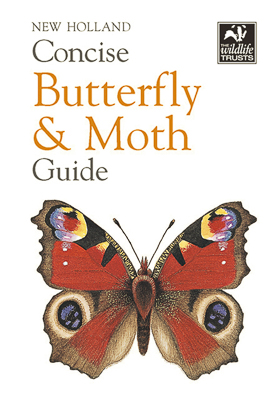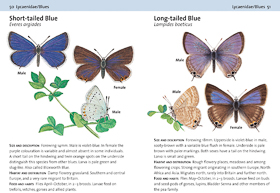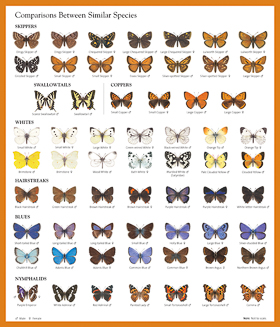 |
From the Publisher: This beautifully illustrated mini field guide is packed with information on the butterflies and moths of Britain and the near Continent. It covers more than 150 species, all of which are illustrated with superb full-colour artworks that show - where relevant - variations in colour, for example for male and female butterflies, as well as some of the most spectacular caterpillars. A concise written account covering size, description, habitat, flight times, distribution, foodplants and habits appears on the same page. The easy-to-follow layouts and superb artworks aid quick and accurate identification, and make this book an indispensable reference in the field as well as at home. It is compact enough to fit in the pocket, yet packed with essential information for the nature enthusiast. To protect it against the elements in the field, the book is wrapped in a durable plastic wallet. Also included is a foldout insert with at-a-glance illustrations showing butterflies and moths by colour and pattern.
£4.99
At last - a pocket guide that actually fits in my pocket! At 130mm x 90mm in size, this 192 page guide - one in a series of "Concise Guides" from New Holland Publishing - is just the job for those wanting a reference with them when they're out and about. Housed in a plastic wallet, it is clearly designed for this very purpose.
All of the British species of butterfly, arranged in taxonomic order, are here - together with about the same number of macro moths. I have to say that it's unclear how the moth species were chosen since real rarities, such as the Death's Head Hawkmoth, are included while some more-likely to be seen in the field (and cause confusion with butterflies, especially, such as the Burnet Companion, Chimney Sweeper and Mother Shipton), are omitted.
The layout is excellent with one species per page and, as one would expect, extremely concise details given (as the title of the book suggests!). Of course, this book is no substitute for a more-comprehensive reference but I do think this book strikes the right balance of providing the relevant information needed in a field guide, and its size. In fact, I could see myself carrying this guide on a Butterfly Conservation field trip so that I can point out specific characteristics when needed.
 |
The book also comes with a handy little foldout insert containing all of the butterfly species, and some moth species. This is a neat little aid for performing a quick scan or a comparison.
 |
I do feel there is some room for improvement, however. While some species are shown life-size, some are almost twice that, and it would have been nice if everything had been shown lifesize (where possible) since most illustrations are shown actual size, or thereabouts anyway (the very first line of text provides the correct indication of wingspan, however). Also, the quality of illustrations is variable. Most species are "spot on", but a few are disappointing either because of the proportions shown (for example, the body being much too small in relation to the wings) or the colours and patterns being far from realistic.
All in all, and given the price, I highly recommend this book to anyone wanting a truly portable field guide. I think the fact that I'll be using it myself in the field says it all.
Visit the New Holland Publishing website.